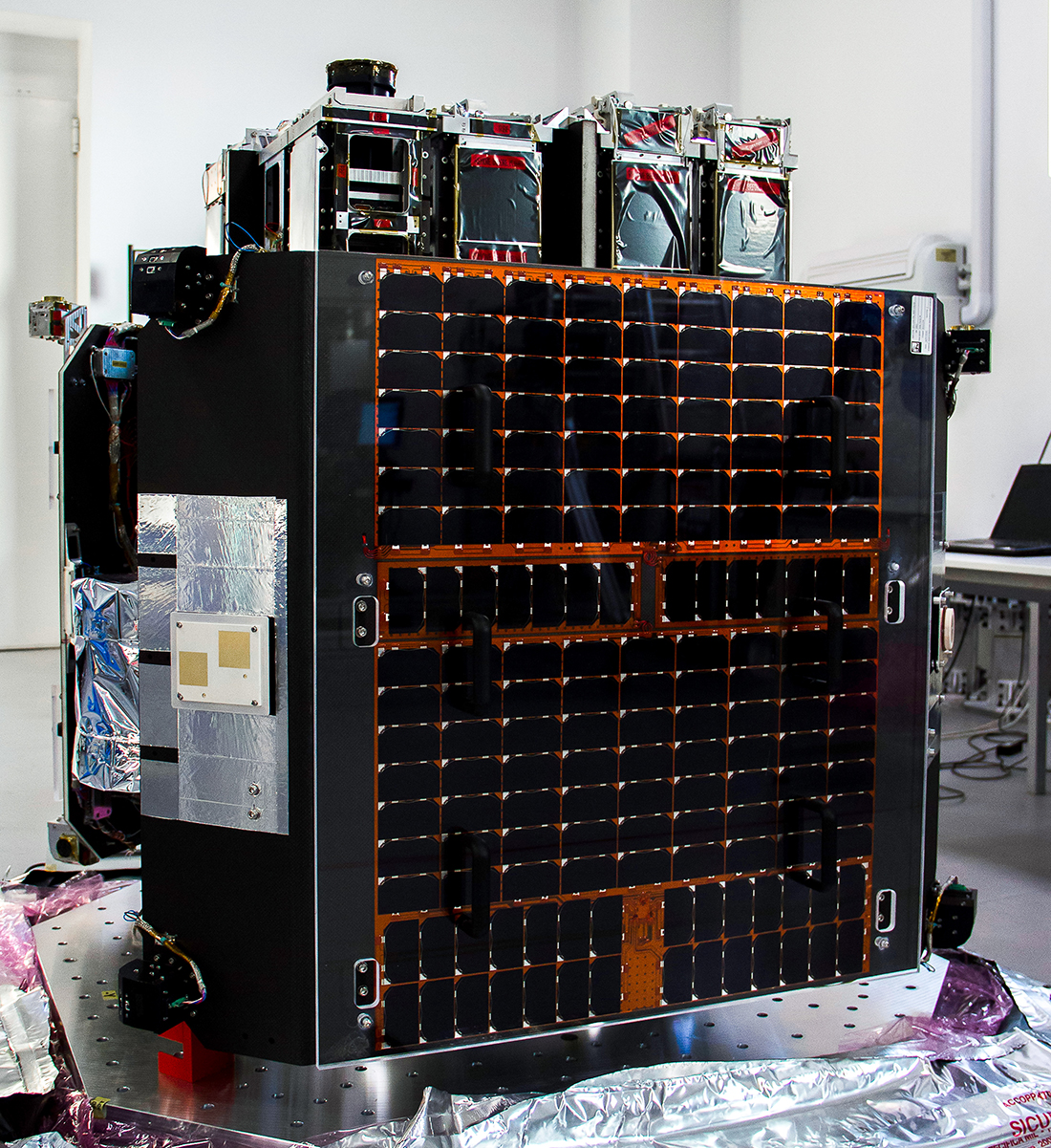Company Spotlight: D-Orbit
Marketing

Featured image: Render of D-Orbit’s ION Satellite Carrier. Image Credit: D-Orbit
Founded in 2011, D-Orbit develops space logistics and orbital transportation services in Earth’s Orbit. This includes the delivery of satellites to desired orbits using their OTV (Orbital Transfer Vehicle) and actively working on in orbit servicing and active debris removal in all orbital regimes. In addition, D-Orbit hosts payloads for in-orbit demonstration which contributes to the advancement of both space technologies’ technical readiness level (TRL) and their service readiness level (SRL), supporting space standardisation and regulation with a particular focus on Space Cloud Services. They are building this infrastructure on their ION Satellite Carriers which their UK head of Business Development, Viney Dhiri affectionately calls their ‘Swiss army knife’.

Image above: D-Orbit’s ION Satellite Carrier. Image credit: D-Orbit
When clarifying D-Orbit’s definition of space logistics and infrastructure, Viney Dhiri uses the metaphor of the Wild West and the final frontier. Rather than focusing on missions explicitly, D-Orbit finds it essential to approach the space sector holistically, Viney remarks “When you get there, you need some sort of infrastructure to get the commercial activities going… When you turn up in the middle of the desert, there’s a bar. It’s called D-Orbit.” Being B Corp certified, D-Orbit has a strong ethical outlook when it comes to sustainability and equitable employment, with two key pillars manifesting environmental and social responsibility. When explaining D-Orbit’s social responsibility Viney points to the importance of space infrastructure to society in terms of both telecommunication, navigation, and Earth Observation (EO). However, social benefit for him is measured through the impact on “lives and livelihoods”. Expanding upon this Viney offers another practical analogy, “When you have a tsunami or if you have an earthquake, the only infrastructure that remains intact is space infrastructure, right?” In offering this example he illuminates the reliability and robustness of the role of space infrastructure; allowing people to communicate even if ground-based infrastructure is compromised.
In bringing together members of ‘Old Space’ (the historical roots of governmental space race), and ‘New Space’ (the modern commercial model) as part of D-Orbit’s organisation, Viney explains that this creates a unique business bringing two eras of space industry together. By coupling the knowledge of those who come from a traditional Old Space background and individuals who are from a ‘younger generation’, including backgrounds such as deep tech, business, and Formula 1, the company can navigate through legacy systems bringing innovation and adaptability. For Viney it is the idea of cross generational visionary projects inspired by science fiction which interest him, encouraging younger generations to consider projects that could span thousands of years.
Complementing innovation in the sector, Viney speaks about D-Orbit’s participation in developing policy and legal frameworks for space. Noting that without the implementation of policies and regulations, businesses like D-Orbit lack protection of their business model. To ensure their protection they must be involved. In doing so, Viney promises that D-Orbit focuses on an “equitable playing field for everybody, so we can work together”. Importantly for D-Orbit’s ecosystem (made up of partnerships with other companies) Viney highlights that “The other point about being an infrastructure provider is we don’t exist without the success of others!”
Glowing with excitement, Viney describes which D-Orbit’s visions he finds the most exciting: Space Cloud Services. D-Orbit’s Space Cloud Services, hosted on D-Orbit’s ION Satellite Carriers, enable the vision of creating in-space infrastructure, allowing application developers (space or otherwise) to deliver what Viney calls, “intelligence at the speed of relevance”. This infrastructure led approach enables regional edge, cloud, and high-power computing. In doing so, existing cloud infrastructure can extend into space across their platforms to a federated network where data is collected, processed in-orbit, and intelligence is delivered via existing comms infrastructure systems.
With recent collaborations with Amazon Web Services (AWS) and Unibap to facilitate edge computing, D-Orbit are challenging not only space infrastructure, but the future of computing as well! As Viney states “The idea is bigger than D-Orbit”; it is about building an ecosystem of companies, technologies, business models, and societal benefits. D-Orbit have also been engaging in a successful European Space Agency (ESA) backed call for ideas programme, launched in partnership with Unibap and Trillium Tech. The call for ideas focuses on demonstration of in-orbit cloud computing applications that are deployed on D-Orbit’s ION Satellite Carrier for the past year, to prove and encourage in-orbit intelligence generation. Though Viney is particularly excited about the line of business he focuses in – Space Cloud Services – he notes that there is so much more that D-Orbit is involved in too. Including the recent contract signed with the European Space Agency (ESA) for the IRIDE Satellite Observation Program. Ultimately this will lead to a constellation of EO satellites that will monitor meteorological conditions, air quality, and critical infrastructure.
The Satellite Applications Catapult is among D-Orbit’s collaborators, with a proud history of working on projects together for many years. Additionally, D-Orbit’s UK offices are located within the Catapult’s premise at the Harwell Science and Innovation Campus, and as Viney notes, D-Orbit often encourages other members of the industry to utilise the Catapult’s Westcott Manufacturing Facilities. By growing within the UK space ecosystem as well as internationally in their Italian HQ, and Portugal site, D-Orbit continues to support and facilitate innovation in the sector. They anticipate having more satellites launched in 2023 (following the four satellites which were successfully launched earlier in the year), so keep your eyes peeled for upcoming launches in 2023!




